Caryn
 Recently, I saw an article on an app I have on my phone, called QuakeFeed. It is, of course, an app that tells me when there are earthquakes anywhere in the world, but my settings alert me if they are bigger 5.0. It’s not that earthquakes scare me or even concern me especially, because I don’t live in a really high earthquake area. I’m just naturally curious, and when a quake happens, I go to the map part of the app to see where it was. The app also has stories about the quakes that occur, especially is there was any damage or loss of life. Periodically, I look at the article part of the app, and that was where I saw the article concerning Mount Everest.
Recently, I saw an article on an app I have on my phone, called QuakeFeed. It is, of course, an app that tells me when there are earthquakes anywhere in the world, but my settings alert me if they are bigger 5.0. It’s not that earthquakes scare me or even concern me especially, because I don’t live in a really high earthquake area. I’m just naturally curious, and when a quake happens, I go to the map part of the app to see where it was. The app also has stories about the quakes that occur, especially is there was any damage or loss of life. Periodically, I look at the article part of the app, and that was where I saw the article concerning Mount Everest.
The article talked about an anomaly that I had not considered before. Now, maybe anomaly isn’t really the right word, but in my mind, that’s what it is. It mentioned that there was a possibility that due to earthquakes in the area, Mount Everest might have…shrunk. In case you didn’t know, Mount Everest is located in India and is part of the Himalayan mountain range. Mount Everest sports the crown  as the world’s highest elevation, at 29,028 feet. The next highest elevation in a mountain is K2 in Pakistan. At 28,251 it is a full 777 feet lower than Mount Everest…at last measurement anyway. On April 25, 2015, a 7.8 earthquake hit Nepal at 11:56am, Nepal Standard Time. Known as the Gorkha earthquake, it killed nearly 9,000 people and injured nearly 22,000. Now, the Smithsonian Magazine is reporting that shortly after that quake, Satellite data was used to determine that large swaths of land in Nepal had risen more than 30 feet, while others had dropped. The school of thought is that the possibility exists that Mount Everest has actually shrunk. As I said, to me that seems like an anomaly, but it’s quite possible that Mount Everest, and all the other mountains of the world, have repeatedly changed in altitude. Somehow, I guess I had it in my head that mountain heights are permanent, but that isn’t even logical. The mountains were created by earthquakes. Their size must be subject to change by an earthquake too. It is the only logical conclusion.
as the world’s highest elevation, at 29,028 feet. The next highest elevation in a mountain is K2 in Pakistan. At 28,251 it is a full 777 feet lower than Mount Everest…at last measurement anyway. On April 25, 2015, a 7.8 earthquake hit Nepal at 11:56am, Nepal Standard Time. Known as the Gorkha earthquake, it killed nearly 9,000 people and injured nearly 22,000. Now, the Smithsonian Magazine is reporting that shortly after that quake, Satellite data was used to determine that large swaths of land in Nepal had risen more than 30 feet, while others had dropped. The school of thought is that the possibility exists that Mount Everest has actually shrunk. As I said, to me that seems like an anomaly, but it’s quite possible that Mount Everest, and all the other mountains of the world, have repeatedly changed in altitude. Somehow, I guess I had it in my head that mountain heights are permanent, but that isn’t even logical. The mountains were created by earthquakes. Their size must be subject to change by an earthquake too. It is the only logical conclusion.
The last time Mount Everest was measured was more than six decades ago, so I guess I wasn’t the only one 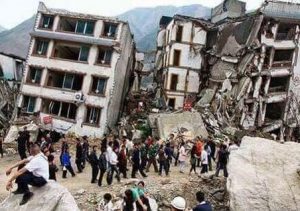 who thought it wouldn’t change. Nevertheless, now India’s surveyor-general, Dr Swarna Subba Rao has plans to send an expedition to Mount Everest. Their mission is to “re-measure the hulking rock.” They do not expect that Everest has shrunk below 29,000 feet, but the technology has changed on the last 60 years, so it is possible that there might be some discrepancies. These days, scientists will measure Everest’s height using GPS equipment and triangulation techniques. “The observational data would take a month to collect and another 15 days to compute,” said Rao. I for one am excited to hear what their findings are. And, to be honest, I hope that the elevation has changed. To me, that would be like watching history in the making.
who thought it wouldn’t change. Nevertheless, now India’s surveyor-general, Dr Swarna Subba Rao has plans to send an expedition to Mount Everest. Their mission is to “re-measure the hulking rock.” They do not expect that Everest has shrunk below 29,000 feet, but the technology has changed on the last 60 years, so it is possible that there might be some discrepancies. These days, scientists will measure Everest’s height using GPS equipment and triangulation techniques. “The observational data would take a month to collect and another 15 days to compute,” said Rao. I for one am excited to hear what their findings are. And, to be honest, I hope that the elevation has changed. To me, that would be like watching history in the making.
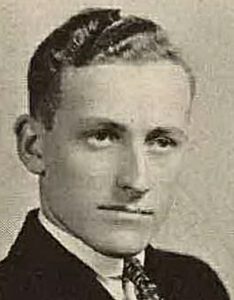 Early in my married life, I met a precious part of my husband, Bob’s family, in the form of his great grandparents, Edgar and Nellie Knox; his great aunt and uncle, Helen and Frank Knox; and their youngest son, Richard. They were wonderful people, and I loved them right away. I always thought it was awesome of Frank and Helen to bring their parents out to Casper to visit their son, Bob Knox’s family, of which I was a part. At that time, I didn’t really have a lot of time to get to know Frank and Helen, but got to know them on subsequent trip, and found them to be very interesting…but, little did I know, that I had only scratched the surface of who these people were.
Early in my married life, I met a precious part of my husband, Bob’s family, in the form of his great grandparents, Edgar and Nellie Knox; his great aunt and uncle, Helen and Frank Knox; and their youngest son, Richard. They were wonderful people, and I loved them right away. I always thought it was awesome of Frank and Helen to bring their parents out to Casper to visit their son, Bob Knox’s family, of which I was a part. At that time, I didn’t really have a lot of time to get to know Frank and Helen, but got to know them on subsequent trip, and found them to be very interesting…but, little did I know, that I had only scratched the surface of who these people were.
After Helen’s passing recently, I found out so much more about her childhood, and the life she and Frank lived. In many ways, it was destiny that they should meet. Helen’s family had moved to California because of her mother’s illness, and after her mother passed away, the three older children were raised by her mother’s sister, while her younger siblings were adopted out. It was a sad time for Helen, but when she grew up, she decided to earn a degree in Social Work. When World War II finally drew the United States into it’s clutches, Helen became active in the USO, and it was then, during a homecoming dance, that she met a handsome young captain, named Richard F (Frank) Knox. They were smitten with each other right away, and married on June 13, 1946.
It was time then for Frank to go to college, so they moved to Pullman, Washington and he attended Washington State College, now Washington State University. When he graduated, Frank and Helen had planned to move to Vanport, Washington for a job he had lined up, with the Clark County PUD in Vancouver, WA, but the Vanport Flood of May 30, 1948 ended that dream. The flood wiped out the up and coming town of Vanport, Oregon, leaving no housing for Frank and Helen. It was then that Frank took an instructor position in Pullman, Washington, and that was where he and Helen lived for the next 40 years, and raised their five sons, Robert, David, Greg, Wesley, and Richard. I find it amazing, how God can have a different plan for us than our plan. I 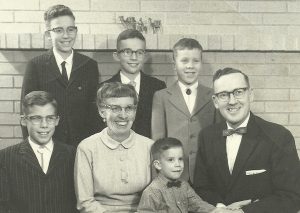 don’t know how things might have worked out had the flood not happened, but Frank and Helen and their sons lived a wonderful life in Pullman, Washington.
don’t know how things might have worked out had the flood not happened, but Frank and Helen and their sons lived a wonderful life in Pullman, Washington.
With Helen’s passing, comes a new kind of loneliness for Frank, and I am glad that he has his wonderful sons and their families to help him get through this difficult time. Nothing will ever replace the love of his life, and I’m sure that this…the first birthday without he beloved soul mate, Helen, will be a difficult on for Frank, and I will be keeping him in prayer today and always, that the Lord with comfort him all the days of his life. Today is Frank’s 97th birthday. Happy birthday Frank!! Have a great day!! We love you!!

 My nephew, Dave Chase, who married my niece Toni on December 18, 2012, loves to travel. It is a passion they both share. A lot of their travel time includes hiking or ball games, but the trip they took this last fall was a little bit different. They were taking a trip that would take them to the same places that Toni’s grandparents, my parents, Al and Collene Spencer, had gone…Alaska. It was my parents dream trip, and Toni wanted to take it too. Dave was totally on board…literally, in fact, since it was a cruise, after all. They took the same cruise my parents had gone and had a wonderful time.
My nephew, Dave Chase, who married my niece Toni on December 18, 2012, loves to travel. It is a passion they both share. A lot of their travel time includes hiking or ball games, but the trip they took this last fall was a little bit different. They were taking a trip that would take them to the same places that Toni’s grandparents, my parents, Al and Collene Spencer, had gone…Alaska. It was my parents dream trip, and Toni wanted to take it too. Dave was totally on board…literally, in fact, since it was a cruise, after all. They took the same cruise my parents had gone and had a wonderful time.
Some of Dave’s family joined them for the cruise, including his brother, Dan. These guys are both very competitive, and so naturally they entered every contest on the cruise ship. Trivia, bean bag toss, basketball, golf…you name it, they got in on it. And not only did they get in on it, the won almost every contest they entered. At first everyone was great about it, but by the end of the cruise, there were a number of people who did not like them, because of it. What do you do…sit out the fun because someone might get upset. In the end, they took home seven trophies…with they call “Our Little Golden Ships.” I guess I find it hard to think that people didn’t like the brothers, because while I don’t personally know Dan, I do know Dave, and I would find it impossible not to like Dave.
Dave and Toni are so perfect together. The are active, and outgoing. Dave is so supportive in the business Toni has started, and he runs any errands she needs done, and helps with the shipping. He is a hard worker, and is 
 willing to help out whenever he is asked to. The day Dave married into this family, he took that to mean that he was a full fledged part of it, and all that entailed. He is right of course, he is a full fledged part of the family, but he takes that to mean more…such as taking on any of the responsibilities that go along with being a family member. Not everyone who marries into a family feels that way, but that is something I have seen in Dave from the very start, and it makes me very proud to call him my nephew. Today is Dave’s birthday. Happy birthday Dave!! Have a great day!! We Love you!!
willing to help out whenever he is asked to. The day Dave married into this family, he took that to mean that he was a full fledged part of it, and all that entailed. He is right of course, he is a full fledged part of the family, but he takes that to mean more…such as taking on any of the responsibilities that go along with being a family member. Not everyone who marries into a family feels that way, but that is something I have seen in Dave from the very start, and it makes me very proud to call him my nephew. Today is Dave’s birthday. Happy birthday Dave!! Have a great day!! We Love you!!
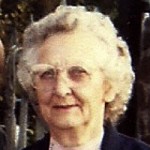 I never had a problem remembering Grandma Hein’s birthday. Grandma is my husband, Bob’s grandmother, so I didn’t grow up knowing her birthday. Nevertheless, I always can always remember that day. I suppose it is because, every year, Grandma had a special date with a ground hog. Everyone has dates…and I don’t mean the romantic kind. There is a date with death, a date with birth, a date with an upcoming test, or graduation. We don’t always call these things dates, although, some of them we do. And every year, we have a date with our birthday. That was the kind of date that Grandma Hein had. Every year of her life, Grandma knew that her day was extra special, because she got to find out about the coming Spring. She mentioned that to me several times, so I know she liked it.
I never had a problem remembering Grandma Hein’s birthday. Grandma is my husband, Bob’s grandmother, so I didn’t grow up knowing her birthday. Nevertheless, I always can always remember that day. I suppose it is because, every year, Grandma had a special date with a ground hog. Everyone has dates…and I don’t mean the romantic kind. There is a date with death, a date with birth, a date with an upcoming test, or graduation. We don’t always call these things dates, although, some of them we do. And every year, we have a date with our birthday. That was the kind of date that Grandma Hein had. Every year of her life, Grandma knew that her day was extra special, because she got to find out about the coming Spring. She mentioned that to me several times, so I know she liked it.
Grandma’s life wasn’t always easy. Her mother, Viola Leary, was in and out of their lives, and when she returned, Grandma wasn’t sure she wanted her there. Of course, there was a step mother in the picture at some point, but that marriage didn’t last either, opening the door for Viola’s return. Viola was back in Grandma’s life until her dad’s passing, and then resurfaced at the time of her own passing. Unfortunately, Grandma’s relationship with her mother was never an especially close one, even when her mother lived with them. Of course, I also understand that there are two sides to every story, but since everyone else had passed away, I only heard the one side.
Grandma was a hard working woman. I’m sure that is partly because of all the years she spent taking care of the house that she and her dad and brother lived in. I remember going to her home for visits, and finding  myself thinking that Grandma just never slowed down. She could run circles around most people and never seemed to get tired. I think that is how most ranchers’ wives are though. The day just never seems to end.
myself thinking that Grandma just never slowed down. She could run circles around most people and never seemed to get tired. I think that is how most ranchers’ wives are though. The day just never seems to end.
It was always so much fun to go to visit Grandma and Grandpa Hein. It was a trip we made sure we took every year, and I have always be thankful we did. It has been so many years, and I really miss those trips and I miss Grandma and Grandpa Hein. Today would have been Grandma’s 108th birthday, and while Spring is supposedly 6 weeks away, the day is special because it is hers. Happy birthday in Heaven, Grandma Hein. We love and miss you very much.
 Not every person in a family is related by blood…or even by marriage. Sometimes, a lifelong friend is, in reality, as close as family. Such is the case with Burl Ford. Burl was one of the neighborhood kids that my mother, Collene Byer Spencer and her siblings played with as children. The first time I heard that they had been childhood friends, I was amazed, because by that time, we were living just down the street from Burl and his family, and in fact we were all friends, with them and their kids. Burl’s kids, Lisa, Susie, Burly, and Judy, were all in gymnastics, and his wife, Thea had learned how to coach and spot for the tumbling. So when my younger sisters and I were at their house, the natural next step was to do tumbling in their basement. It was Thea who instilled in me, the love of gymnastics, which I continued doing through high school.
Not every person in a family is related by blood…or even by marriage. Sometimes, a lifelong friend is, in reality, as close as family. Such is the case with Burl Ford. Burl was one of the neighborhood kids that my mother, Collene Byer Spencer and her siblings played with as children. The first time I heard that they had been childhood friends, I was amazed, because by that time, we were living just down the street from Burl and his family, and in fact we were all friends, with them and their kids. Burl’s kids, Lisa, Susie, Burly, and Judy, were all in gymnastics, and his wife, Thea had learned how to coach and spot for the tumbling. So when my younger sisters and I were at their house, the natural next step was to do tumbling in their basement. It was Thea who instilled in me, the love of gymnastics, which I continued doing through high school.
Cheryl remembers playing Jacks on the patio in their back yard with Burl. That is an unusual thought, because Jacks was primarily a girls game…at least in school. Burl didn’t care about that. He loved kids, and playing with his kids and the neighbor kids ![16387182_10202403016154753_4437392044467414144_n[1]](https://carynschulenberg.com/wp-content/uploads/2017/02/16387182_10202403016154753_4437392044467414144_n1-300x225.jpg) was totally within his nature…and in fact, growing up was totally not in his nature. Burl was a kid all his life. And…Burl loved his pranks!! I suppose these days he might have found himself in trouble, but those were different times. One prank, in particular, that lots of their family friends remember is the cherry bombs. In those days, kids could safely have sleep overs in someone’s back yard. The Ford’s back yard had a slight slope to it, and made for a perfect sleep over spot…in theory. You did have to take Burl into account. He would wait until we were all settled out there sleeping, and out of the blue, in the middle of the night…a cherry bomb would go off. Burl was careful of course, and never threw it near anyone, but it was something that definitely got your attention.
was totally within his nature…and in fact, growing up was totally not in his nature. Burl was a kid all his life. And…Burl loved his pranks!! I suppose these days he might have found himself in trouble, but those were different times. One prank, in particular, that lots of their family friends remember is the cherry bombs. In those days, kids could safely have sleep overs in someone’s back yard. The Ford’s back yard had a slight slope to it, and made for a perfect sleep over spot…in theory. You did have to take Burl into account. He would wait until we were all settled out there sleeping, and out of the blue, in the middle of the night…a cherry bomb would go off. Burl was careful of course, and never threw it near anyone, but it was something that definitely got your attention.
Today, we said goodbye to Burl…all of his friends and family. It was a beautiful service filled with happy 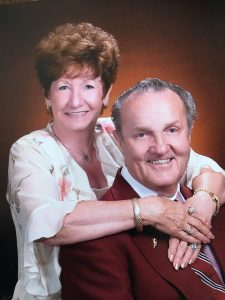 memories, and yes, the shedding of tears. Thea’s sisters reminded us of his love of sports, including the Broncos and the Colorado Rockies, as well as the Super Bowl games he got to attend, and throwing out the first pitch at a Rockies game. They told of his love of fishing, camping, snowmobiling, golf, travel, and precious time spent at their mountain cabin. And they told us about the many pranks and his bag of tricks. Burl was a member of the Oil City Slickers and Gentleman’s touch, both barber shop musical groups. The group sang at his service, and it occurred to me that, while the songs were beautiful, there was one voice missing. Those were wonderful memories, but it was something the minister said that particularly struck me as amazing. As he told of his last visits with Burl, and many before that, he said that the one thing he noticed was that Burl was always so happy and full of life. Then, he said that he wished that he could take some of Burl’s happy, joyous spirit and zest for life, and throw it out into the world. Instinctively, I thought…just pack it in a cherry bomb.
memories, and yes, the shedding of tears. Thea’s sisters reminded us of his love of sports, including the Broncos and the Colorado Rockies, as well as the Super Bowl games he got to attend, and throwing out the first pitch at a Rockies game. They told of his love of fishing, camping, snowmobiling, golf, travel, and precious time spent at their mountain cabin. And they told us about the many pranks and his bag of tricks. Burl was a member of the Oil City Slickers and Gentleman’s touch, both barber shop musical groups. The group sang at his service, and it occurred to me that, while the songs were beautiful, there was one voice missing. Those were wonderful memories, but it was something the minister said that particularly struck me as amazing. As he told of his last visits with Burl, and many before that, he said that the one thing he noticed was that Burl was always so happy and full of life. Then, he said that he wished that he could take some of Burl’s happy, joyous spirit and zest for life, and throw it out into the world. Instinctively, I thought…just pack it in a cherry bomb.
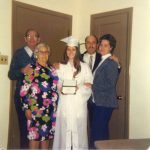 Recently, I heard a saying that has really made me think. “We take photos as a return ticket to a moment otherwise gone.” The thing about that thought that struck me the most, was when I considered moments otherwise gone…forever. I have always loved photography. From the time I was a little girl and received my first camera, I was hooked. There were years I wasn’t so good about taking pictures, and mistakes I made, such as not including people in my photos enough, not writing down the names of people and the locations, and the biggest one in my mind, not being in the pictures enough. So many people these day take selfies, and then there are the selfies that are ridiculed because “the person takes too many selfies.” I suppose that can be an issue, but when you think about it, they will always have that moment, and if that selfie made them look and feel especially pretty or handsome, so much the better. It is a moment, frozen in time…a memory that will always be with them.
Recently, I heard a saying that has really made me think. “We take photos as a return ticket to a moment otherwise gone.” The thing about that thought that struck me the most, was when I considered moments otherwise gone…forever. I have always loved photography. From the time I was a little girl and received my first camera, I was hooked. There were years I wasn’t so good about taking pictures, and mistakes I made, such as not including people in my photos enough, not writing down the names of people and the locations, and the biggest one in my mind, not being in the pictures enough. So many people these day take selfies, and then there are the selfies that are ridiculed because “the person takes too many selfies.” I suppose that can be an issue, but when you think about it, they will always have that moment, and if that selfie made them look and feel especially pretty or handsome, so much the better. It is a moment, frozen in time…a memory that will always be with them.
When I look back at the funerals of my parents and my father-in-law, and the slide shows we did for them, I  found myself amazed that I was having trouble locating pictures of me with them…particularly with my dad. It was a strange thing for me to realize that, until I thought about how much time I spent behind the camera and not in front of it. Since that time, I have made sure to take those pictures of my mom and me, my father-in-law, and me, and my mother-in-law and me, because I want to have those return tickets to those precious moments of the past. It’s not just about the slide show either, although that is a permanent memory of their lives, but it’s about the time spent with them. In his last two years, my dad and I spent many hours together, while I was one of his caregivers. I got to enjoy his wonderful sense of humor, as we teased each other every day. In my memory files, I can see him pretending to be asleep when I came in. Then, I would softly flick his hand, and he would accuse me of hitting him, saying, “Oh!! You struck me!” Then we would both laugh about it, because we knew that in a million years, that would never have happened. We pretended to argue, as I dressed his wounds, and helped him get dressed. Then I would step out while he finished the process, and he would come out into the living room. Whenever I am in their house, I can see those moments as vividly as if they were still there. Still, there are many moments that aren’t quite as clear, and a picture would tell the story
found myself amazed that I was having trouble locating pictures of me with them…particularly with my dad. It was a strange thing for me to realize that, until I thought about how much time I spent behind the camera and not in front of it. Since that time, I have made sure to take those pictures of my mom and me, my father-in-law, and me, and my mother-in-law and me, because I want to have those return tickets to those precious moments of the past. It’s not just about the slide show either, although that is a permanent memory of their lives, but it’s about the time spent with them. In his last two years, my dad and I spent many hours together, while I was one of his caregivers. I got to enjoy his wonderful sense of humor, as we teased each other every day. In my memory files, I can see him pretending to be asleep when I came in. Then, I would softly flick his hand, and he would accuse me of hitting him, saying, “Oh!! You struck me!” Then we would both laugh about it, because we knew that in a million years, that would never have happened. We pretended to argue, as I dressed his wounds, and helped him get dressed. Then I would step out while he finished the process, and he would come out into the living room. Whenever I am in their house, I can see those moments as vividly as if they were still there. Still, there are many moments that aren’t quite as clear, and a picture would tell the story  so well. And now that it is too late to take them, I really wish I had some of those moments in pictures.
so well. And now that it is too late to take them, I really wish I had some of those moments in pictures.
There are countless people who tell me how much they hate having their picture taken. I find that really sad, because it isn’t about them. They are denying others the right to have a return ticket to those precious moments. So few people think about it that way…until the day when they really wish they had a picture of them with someone special. That’s when it finally hits them. Pictures aren’t just something silly to post of Facebook. They are memories. They are return tickets to a moment otherwise gone. I think I’ve improved on those return tickets quite a bit, and for that, I am happy.
 My niece, Cassie Iverson has been into taking pictures for a while now, and lately, her husband, Chris has really been getting into photography too. Both of them have always loved nature, camping, fishing, and just enjoying time spent outdoors. I can relate to that, because my husband, Bob and I feel the same way…at least about being outdoors…not so much camping and fishing. Anyone who has spent much time relaxing in nature, will naturally be drawn to the photography of nature, because the beauty of it is something you always want to hang on to. Photography allows us to hang on to those memories. In fact, I saw a saying once that really describes the way a photographer feels, “We take photos as a return ticket to a moment otherwise gone.” Our memories can be so quickly lost, if we have done nothing to preserve them.
My niece, Cassie Iverson has been into taking pictures for a while now, and lately, her husband, Chris has really been getting into photography too. Both of them have always loved nature, camping, fishing, and just enjoying time spent outdoors. I can relate to that, because my husband, Bob and I feel the same way…at least about being outdoors…not so much camping and fishing. Anyone who has spent much time relaxing in nature, will naturally be drawn to the photography of nature, because the beauty of it is something you always want to hang on to. Photography allows us to hang on to those memories. In fact, I saw a saying once that really describes the way a photographer feels, “We take photos as a return ticket to a moment otherwise gone.” Our memories can be so quickly lost, if we have done nothing to preserve them.

I think that is something Chris and Cassie both understand. They are both very hands on parents. Having a developmentally disabled child and a child who is not disabled, is quite a handful, but they manage very well. Chris has taken to dancing around the living room with the kids. That is a cool thing, because they develop a love of music and get some exercise. I’m thankful that he is so helpful, because having kids is a lot of work, and if the dad isn’t really involved, it takes a toll on the mom. Kids need both parents to be involved in their lives, because they learn different things from each parent. They also like to have special lunches with the kids. Including the kids in activities is a great way to make the kids a part of everything. It’s all part of living life.
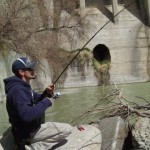 As to Chris’ own hobbies, he is a sportsman, so fishing gear and guns are simply a part of the plan. Chris likes to make sure his guns are in perfect working condition, so he makes sure they are properly cleaned. Anyone who is a gun enthusiast knows that having a dirty gun, can be bad in so many ways. It may misfire or worse, if it is not properly cleaned. I think that for most people in Wyoming, if you don’t own or appreciate guns, you are very strange. And the people in our family are definitely gun enthusiasts. Chris also likes to work on his Blazer, although it has been giving him so trouble lately. As I told Cassie, mechanics is a never ending story. There is always something that needs to be worked on. Today is Chris’ birthday. Happy birthday Chris!! Have a great day!! We love you!!
As to Chris’ own hobbies, he is a sportsman, so fishing gear and guns are simply a part of the plan. Chris likes to make sure his guns are in perfect working condition, so he makes sure they are properly cleaned. Anyone who is a gun enthusiast knows that having a dirty gun, can be bad in so many ways. It may misfire or worse, if it is not properly cleaned. I think that for most people in Wyoming, if you don’t own or appreciate guns, you are very strange. And the people in our family are definitely gun enthusiasts. Chris also likes to work on his Blazer, although it has been giving him so trouble lately. As I told Cassie, mechanics is a never ending story. There is always something that needs to be worked on. Today is Chris’ birthday. Happy birthday Chris!! Have a great day!! We love you!!
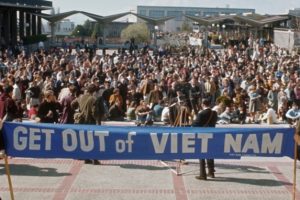 Over the years, many people have done all they could to create a world of peace, but is that really possible? I don’t believe it is. There is always a nation or group of people who have something they don’t like…whether it is politics, religion, boarders, or any number of other reasons. Periodically there are groups that try to find a way to promote peace. Some try to do so through protests against war, which is not very effective, because the protests are seldom peaceful themselves, but they do get publicity. Others try to appease the enemy, which also doesn’t work, because it is viewed as a show of weakness and compliance, causing the enemy to feel empowered.
Over the years, many people have done all they could to create a world of peace, but is that really possible? I don’t believe it is. There is always a nation or group of people who have something they don’t like…whether it is politics, religion, boarders, or any number of other reasons. Periodically there are groups that try to find a way to promote peace. Some try to do so through protests against war, which is not very effective, because the protests are seldom peaceful themselves, but they do get publicity. Others try to appease the enemy, which also doesn’t work, because it is viewed as a show of weakness and compliance, causing the enemy to feel empowered.
When I was in high school, a singing group came to the school to perform for us. The group was called, “Up With People.” Their purpose was to unite the world through charity and song. It’s a noble effort, and in the Hippie Generation, of which I was a part, it all seemed possible. Of course, it wasn’t…not really. That effort ended, and another cause began, and failed as well. Oh, don’t get me wrong, people were helped, lives were changed, and everyone felt like they had made a difference. I suppose they did, but not in the area of world peace…which is, I believe, a myth. I think we as people traveling through life on earth, can help each other, donate funds, be kind, and reach out, but to make a world where there is no war…a world of peace on earth…no, I don’t think it is possible in this age…or any other.
I’m not against humanitarian groups that try to help those in need. I believe that we as humans should be 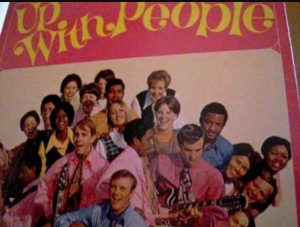 compassionate and willing to help as needed, but the reality is that we must also understand that while we can help a current need, or even some in the future, we cannot stop the evil and hatred that exists in this world. There will not be peace on earth in the way that people think it can happen, because there are too many differences…differences of opinion, beliefs, rights, wrongs, and desire, not to mention agendas. No singing group, protest, or humanitarian effort will ever make it so. I guess that in the end, all we can do is try to create peace in our own little corner of the world and pray that it multiplies so that it affects those around us, and not get so upset when we can’t find a way to create world peace, because that is an impossible feat for the human race.
compassionate and willing to help as needed, but the reality is that we must also understand that while we can help a current need, or even some in the future, we cannot stop the evil and hatred that exists in this world. There will not be peace on earth in the way that people think it can happen, because there are too many differences…differences of opinion, beliefs, rights, wrongs, and desire, not to mention agendas. No singing group, protest, or humanitarian effort will ever make it so. I guess that in the end, all we can do is try to create peace in our own little corner of the world and pray that it multiplies so that it affects those around us, and not get so upset when we can’t find a way to create world peace, because that is an impossible feat for the human race.
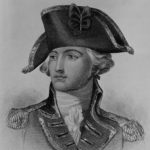 Few people think about the American Revolutionary War any more, because it was so long ago, and we have been an independent nation for so long now, that is almost seems unimportant, but nothing could be further from the truth. The strategies used then, were among the most amazing ever, when you consider the times, and the weapons available to these armies. Just moving the cannon from one place to another was a huge undertaking. Each one weighed upwards of 4500 pounds. The cannon was a major weapon, and was truly necessary if the army was to have a chance of winning a battle. Guns didn’t shoot far enough to have much safety from enemy fire. Getting close enough to successfully fight the enemy meant putting the troops at great risk, during a time when medical assistance was not readily available.
Few people think about the American Revolutionary War any more, because it was so long ago, and we have been an independent nation for so long now, that is almost seems unimportant, but nothing could be further from the truth. The strategies used then, were among the most amazing ever, when you consider the times, and the weapons available to these armies. Just moving the cannon from one place to another was a huge undertaking. Each one weighed upwards of 4500 pounds. The cannon was a major weapon, and was truly necessary if the army was to have a chance of winning a battle. Guns didn’t shoot far enough to have much safety from enemy fire. Getting close enough to successfully fight the enemy meant putting the troops at great risk, during a time when medical assistance was not readily available.
For the English, fighting on American soil was hazardous anyway. They had the disadvantage of not knowing the terrain well, so hiding places were much more well known to the Americans. The British were at a serious  disadvantage. Then, on January 28, 1777, John Burgoyne, a poet, playwright, and British general, submitted a plan to isolate New England from the other colonies, which took in modern day New Hampshire, Massachusetts, Rhode Island and Connecticut. That area might not have been a really big area, as territories go, but it was a big undertaking for any army. Nevertheless, it was the plan that the British decided to use. Burgoyne’s plan called for 8,000 British troops from Canada to move southward through New York by way of Lake Champlain and the Mohawk River. He planned to take the Americans by surprise. General Burgoyne thought he and his troops could take control of the Hudson River and isolate New England from the other colonies.
disadvantage. Then, on January 28, 1777, John Burgoyne, a poet, playwright, and British general, submitted a plan to isolate New England from the other colonies, which took in modern day New Hampshire, Massachusetts, Rhode Island and Connecticut. That area might not have been a really big area, as territories go, but it was a big undertaking for any army. Nevertheless, it was the plan that the British decided to use. Burgoyne’s plan called for 8,000 British troops from Canada to move southward through New York by way of Lake Champlain and the Mohawk River. He planned to take the Americans by surprise. General Burgoyne thought he and his troops could take control of the Hudson River and isolate New England from the other colonies.
In his plan, the isolation of New England was designed to free British General William Howe to attack Philadelphia. Unfortunately, while the plan seemed to be working, Burgoyne miscalculated the part distance would play on his plan. His supply line was stretched in a long, narrow strip from the northern tip of Lake Champlain south to  the northern curve of the Hudson River at Fort Edward, New York. As Burgoyne’s army marched south, the Patriot militia was circling north. They cut off the British supply line. What had begun as a major victory, ended up as a defeat in Bennington, Vermont, and bloody draws at Bemis Heights, New York. On October 17, 1777, a frustrated Burgoyne was forced to retreat 10 miles and finally surrendered his remaining 6,000 British forces to the Patriots at Saratoga. France, upon hearing of the Patriot victory, agreed to recognize the independence of the United States. With France’s support, the Patriots took the ultimate victory. Following the defeat at Saratoga General Burgoyne returned home in shame and defeat. He was severely criticized and soon retired from active service.
the northern curve of the Hudson River at Fort Edward, New York. As Burgoyne’s army marched south, the Patriot militia was circling north. They cut off the British supply line. What had begun as a major victory, ended up as a defeat in Bennington, Vermont, and bloody draws at Bemis Heights, New York. On October 17, 1777, a frustrated Burgoyne was forced to retreat 10 miles and finally surrendered his remaining 6,000 British forces to the Patriots at Saratoga. France, upon hearing of the Patriot victory, agreed to recognize the independence of the United States. With France’s support, the Patriots took the ultimate victory. Following the defeat at Saratoga General Burgoyne returned home in shame and defeat. He was severely criticized and soon retired from active service.
 When we think of a cosmetologist, we think of someone who cuts and styles hair, probably dyes it too, as well as doing make up and nails a lot of the time. It is a profession that caters to a lot of people, but few really give it much thought after the appointment is over. I don’t go to a cosmetologist, but my niece, Lacey Stevens is one, and if I did go, she would be the one I would go to. Lacey is very dedicated to her career and to her clients. When I look at Lacey’s Facebook page, I see several people who have posted their gratitude for her work. One post in particular comes to mind. Her client posted, “Thank you for making me so pretty for my birthday! I love you!” Lacey and her expertise helped this girl have a wonderful birthday because she felt beautiful, which made her day extra special.
When we think of a cosmetologist, we think of someone who cuts and styles hair, probably dyes it too, as well as doing make up and nails a lot of the time. It is a profession that caters to a lot of people, but few really give it much thought after the appointment is over. I don’t go to a cosmetologist, but my niece, Lacey Stevens is one, and if I did go, she would be the one I would go to. Lacey is very dedicated to her career and to her clients. When I look at Lacey’s Facebook page, I see several people who have posted their gratitude for her work. One post in particular comes to mind. Her client posted, “Thank you for making me so pretty for my birthday! I love you!” Lacey and her expertise helped this girl have a wonderful birthday because she felt beautiful, which made her day extra special.
Lacey takes a special interest in makeup, and watches tutorials all the time on the latest look and how to apply  it correctly. Eventually, it is her dream to make her own makeup tutorials. That dream was actually in the works at Christmastime, but was waylaid when her boyfriend, Michael Tanner’s car was broken into and his Christmas presents to her, stolen. Now that makes me mad. A camera and a lighted makeup mirror for the purpose of creating her own YouTube videos showing makeup techniques. So, as soon as the insurance is settled, they will purchase those things again and she will be on her way. I am very excited about that. Some of the new makeup techniques, like contouring, a technique which seems to escape me, are so great. Maybe that can be Lacey’s first tutorial.
it correctly. Eventually, it is her dream to make her own makeup tutorials. That dream was actually in the works at Christmastime, but was waylaid when her boyfriend, Michael Tanner’s car was broken into and his Christmas presents to her, stolen. Now that makes me mad. A camera and a lighted makeup mirror for the purpose of creating her own YouTube videos showing makeup techniques. So, as soon as the insurance is settled, they will purchase those things again and she will be on her way. I am very excited about that. Some of the new makeup techniques, like contouring, a technique which seems to escape me, are so great. Maybe that can be Lacey’s first tutorial.
Michael is a very giving person, and for Lacey’s birthday, he has planned a trip to Boston and New York City in February to see a comedian they both like. The trip is to  include a luxury train ride from Boston to New York City. Lacey is very excited. Trains are great, so that will certainly be major highlight of the trip.
include a luxury train ride from Boston to New York City. Lacey is very excited. Trains are great, so that will certainly be major highlight of the trip.
Lacey is one of the up and coming hair stylists. She is one of the most requested hair technicians at Supercuts, where she works. Her personality and her love of beauty glows from her face, and people are naturally drawn to her. Then, they are never disappointed in the results. She is also a top seller of the products that the store sells, because if Lacey recommends it, her clients know it is a great product. Today is Lacey’s birthday. You’ve come a long way, baby, but the best is yet to be!! Happy birthday Lacey!! Have a great day!! We love you!!

